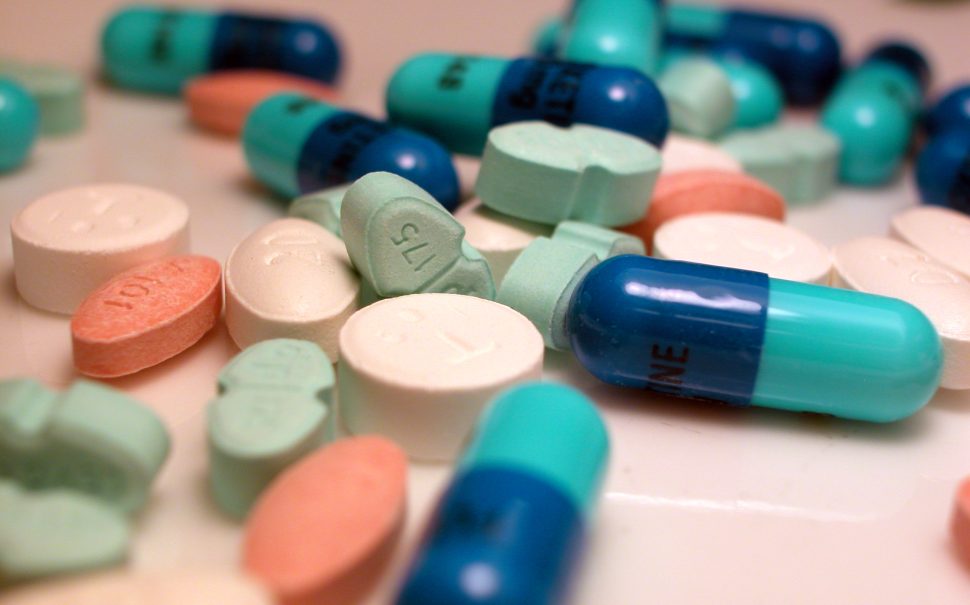Despite reports of skyrocketing ADHD diagnoses and medication shortages, only 10% of adults in England actually take an NHS prescription for the condition. Why are medication rates still so low?
Over the past decade, reports of ADHD diagnosis rates soaring, prescription medication shortages, and years-long assessment waiting lists have been constant.
Yet behind the headlines is a stark reality: only 10% of people with ADHD in the UK actually take a prescription for the condition.
People said they didn’t want to ‘rely on chemicals’ to live their lives, and revealed being scared that a prescription for ADHD would make them ‘lose their spark’.
What is ADHD and how can it be medicated?
ADHD (attention deficit hyperactivity disorder) is a neurodevelopmental condition characterised by inattentive, hyperactive, and impulsive behaviours that can interfere with daily life and development.
NHS England prescribes central nervous system stimulants and drugs to some patients diagnosed with ADHD to combat their symptoms.
These include methylphenidate hydrochloride (commonly branded as Ritalin or Methylin), lisdexamfetamine dimesylate (commonly branded as Vyvanse and Elvanse), dexamfetamine sulfate, atomoxetine hydrochloride, and guanfacine.
The latest NHS report on drugs used for ADHD from October-December 2024, published in March this year, revealed a clear increase in prescriptions for ADHD patients over the last ten years.
The number of patients taking an ADHD prescription at the end of 2024 was 248,012 – nearly triple the 2015 figure of 84,375.
But compared to the 2.6 million estimated by the ONS to have the condition in the UK, this figure remains small, with nine out of 10 people with ADHD therefore not taking a prescription.
Women, older people, and those living in low deprivation areas in England had the lowest rates of NHS ADHD prescriptions last year, whilst young boys and those in high deprivation areas were the most prescribed demographic.
Boys aged 10-14 made up nearly 20% of the overall total taking an NHS prescription for ADHD, whilst men on the whole made up almost two thirds.
Why are people hesitant?
People with ADHD in England explained why they were hesitant to take a prescription. They listed a fear of losing their ‘spark’, restrictive lifestyle changes accompanying some drugs, hesitancy about the potential side effects, and years-long waiting lists to get an NHS prescription.
Molly was diagnosed with ADHD aged 27 privately after waiting two years on an NHS waiting list, and has taken Lisdexamfetamine for over a month.
While the medication has helped her organise her daily life, she felt that others might be reluctant to take a prescription because of the side effects and lifestyle changes required when taking certain CNS stimulant chemicals.
She said: “I think one reason why people are scared of taking medication is because of all of the stuff you can’t do, or have.
“With lisdexamfetamine for example you can’t have any Vitamin C in the morning, you have to eat before you have it, you can’t do strenuous exercise for two hours after taking it, it can make you feel quite sick if you have it on an empty stomach, and you’re not supposed to drink with it.
“I can imagine these are things that people diagnosed as adults wouldn’t want to do.”
Molly also explained the side effects from her prescription, which included higher blood pressure, queasiness, and insomnia if taken too late in the day.
She added that the concentration the prescription enables can also be a double-edged sword.
“It can go either way, because you can be focused on the wrong thing,” she said.
“One day, I spent the whole day packing and tidying my room, but this was on a day when I was supposed to be working!”
Others felt they were not fully informed by their doctors before taking the prescription.
Kirsty Holden, 38, is an ADHD coach and was diagnosed with ADHD in April 2024 by the NHS.
She began taking a prescription of lisdexamfetamine dimesylate (Elvanse) in January this year, and now combines it with dexamfetamine sulfate (Amfexa).
She said: “The biggest thing for me is the lack of support or direction around the medications – if I had been told that there will be things I will likely need to change slightly, that there are difficulties this will help with but that you also need to be open to switching strategies up, then I’d have gone into it a little less blind.
“It’s like I was effectively starting from scratch and re-learning things about me that I’d already processed or dealt with and found strategies for.”
Holden added that while the prescription has helped her with focusing, emotional regulation and binge eating, it is not a ‘magic pill’ and her partner had initial concerns about her taking it.
She said: “I could tell that my husband was scared about me losing my spark. I wasn’t worried though; I needed help!
“But I do feel it does affect it a little bit – the higher the dosage I went on the more boring and just ‘not bothered’ I became, which is not like me.
“It wasn’t and isn’t a magic pill.’”
Gender breakdown
Men made up nearly two thirds of the total identified NHS patients taking ADHD prescriptions on the NHS last year, with a total of 150,599 on a prescription compared to 97,188 women.
Whilst it is widely believed that ADHD in women and girls is under-diagnosed in England, there is not enough data or research currently to know for certain why.
The NHS states: “ADHD is thought to be recognised less often in girls than boys, perhaps because girls with ADHD more commonly have inattentive symptoms and these can be harder to recognise.”
Molly felt that women may be more hesitant to take the prescription because they often have other medications and health concerns to deal with.
She said: “I think a big thing among people not taking ADHD medication is the worry that it’s going to have other mental health side effects, especially for women as I wonder if the medication that you get is different from men.
“I know lots of my friends are trying to come off the contraceptive pill and stuff. Women have had lots of chemicals in our bodies for a long time, so they’re more reluctant.’”
Molly also felt that her gender contributed to her late diagnosis. Her ADHD symptoms exhibited differently to her brother’s, who was diagnosed with ADHD much earlier, at age 12.
She said: “My doctor thought it wasn’t noticed in me for so long because I was compared to my brother who had the classic male symptoms such as always moving, not sitting still and bouncing off the walls.
“Whereas mine manifested in more talkative behaviours, just being disorganised, and jumping around the creativity that feeds into me now as an adult.’”
Age analysis
The latest NHS data showed that younger people had far higher rates of ADHD prescription than older people, with 56,035 10-14yr olds taking a prescription for ADHD last year compared to just 7,730 50-54yr olds.
Among those prescribed a CNS stimulant for ADHD by the NHS last year were also 18 infants aged 0-4 and 31 patients aged 90 and above.
But the demographic, by age and gender combined, with the highest rates were adolescent males, with 43,253 10-14yr old boys taking a prescription for ADHD in England last year, making up 17.4% of the patient total.
Those who had been diagnosed with ADHD later in life frequently said that since they had learnt to cope with the condition without a prescription thus far, they saw little need to start taking one as an adult.
Tess Eagle Swan, 61, was diagnosed with ADHD in April 2010 through the NHS.
She said: “I have never taken meds for it and never would.
“I have coped for many years now and have special tools to manage it.
“I do not want to be dependent on chemicals to manage life. Learning to accept who I am and how I am has been empowering. I have many strengths with ADHD.’”
But other adults have said that a prescription has been life-changing.
By deprivation index
The data also uncovered a higher prescription rate for NHS patients with ADHD living in areas with the greatest deprivation levels (according to the Index of Multiple Deprivation [IMD]).
The highest deprivation areas had 51,885 patients taking an NHS prescription for ADHD, compared to 49,073 patients living in areas with the least deprivation.
The most prescribed drugs
The drug prescribed to the most patients was methylphenidate hydrochloride (commonly branded as Ritalin or Methylin), which was prescribed to 145,509 NHS patients last year. This was followed by lisdexamfetamine dimesylate (branded as Vyvanse or Elvanse) taken by 72,867 patients, and dexamfetamine sulfate, which was prescribed to 17,444 patients.
Featured image credit: Wikimedia Commons under the Creative Commons Attribution-Share Alike 3.0 Unported License.





Join the discussion